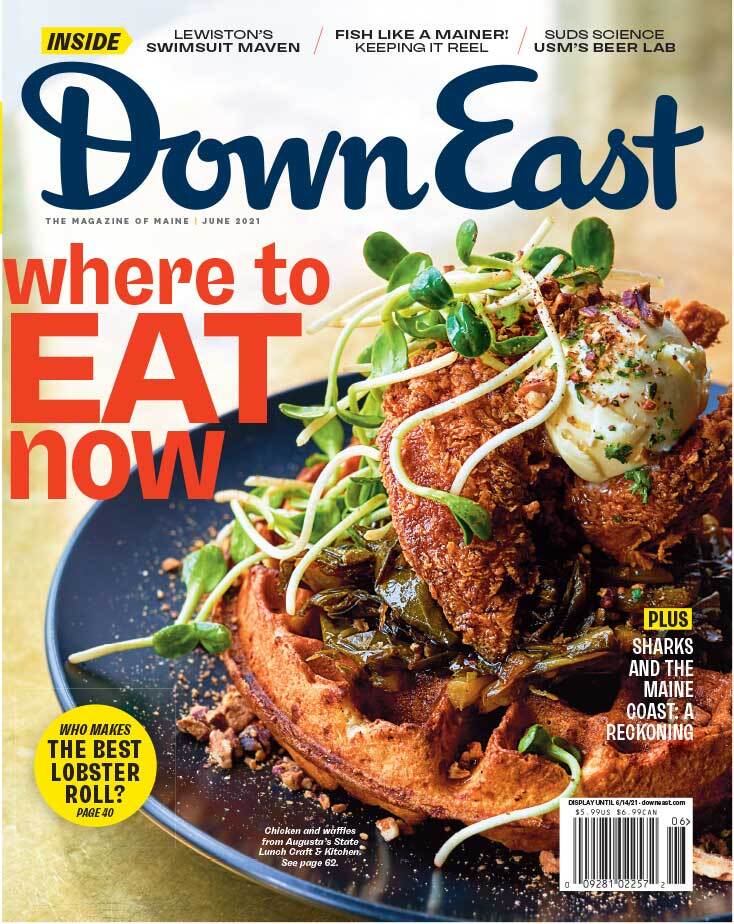By Adrienne Perron
Photographs courtesy of the Maine Historical Society/Gail Dodge
Fashion isn’t frivolous — it’s a primary resource that illustrates societal shifts throughout time. That’s what Freeport-based textile and dress historian Jacqueline Field wants people to take away from the Maine Historical Society’s Historic Dress Collection, an assemblage of Mainers’ duds (mostly, but not all, dresses) from the early 18th century on, now browsable online for the first time thanks to a federal grant from the Institute of Museum and Library Services. The MHS has been building the collection since 1822, and the pieces are often documented with the names of their original owners, even if little is known about the details of their lives. Field, who provided narration for the project, told us about her three favorite gowns.
Crinoline, 1860
“This is a crinoline, or a large dome-skirted dress, that was worn by Helen Bancroft Hay, of Portland. The dressmaker used wide stripes, which are very cleverly placed. The skirt is also very tightly gathered into the small waist, which wasn’t easy to do. A special feature of the dress is its buttons, mini cameos made of glass. This was the era when cameos were very fashionable. The deep fringe illustrates the increasing availability of silk trimmings around this time, when American companies were exploring silk manufacturing. Helen would have been upper-middle class and might have worn this dress to visit friends or for a special occasion.”


Cuirasse-style dress, 1880
“It’s a style that only existed for a very short period. Cuirasse is a French word for armor, referring to the close fit. Bustle dresses like this had a jacket-like bodice part called a basque; this basque is very long and extends over the hips and spreads out to the sides. It’s beautifully hand-embroidered, and at the edges of the cuirasse and the edges of the sleeves, there’s a chenille bobble fringe, something produced by the burgeoning American trim and fringe industry. Owned by Hannah P. Adams, of Belfast, this is another dress that would have been worn for a special occasion, or maybe for a walk, but nothing too energetic.”
Evening dress, 1970
“A wool dress, by designer Geoffrey Beene, with a trimming of diamanté beading. It’s just the most elegant dress imaginable, a sleeveless gray-flannel gown with an empire waist. This is a top-of-the-line American fashion designer at work here. This unusual material is something he used often — he was more simple and elegant and didn’t use many frilly materials. This gown was owned by Cecile P. Carver, of Scarborough. A woman wouldn’t require a corset to shape her to get into this dress, unlike the others. It’s so simple and straight — it’s telling you something about a more comfortable, easy society that we live in today.”





